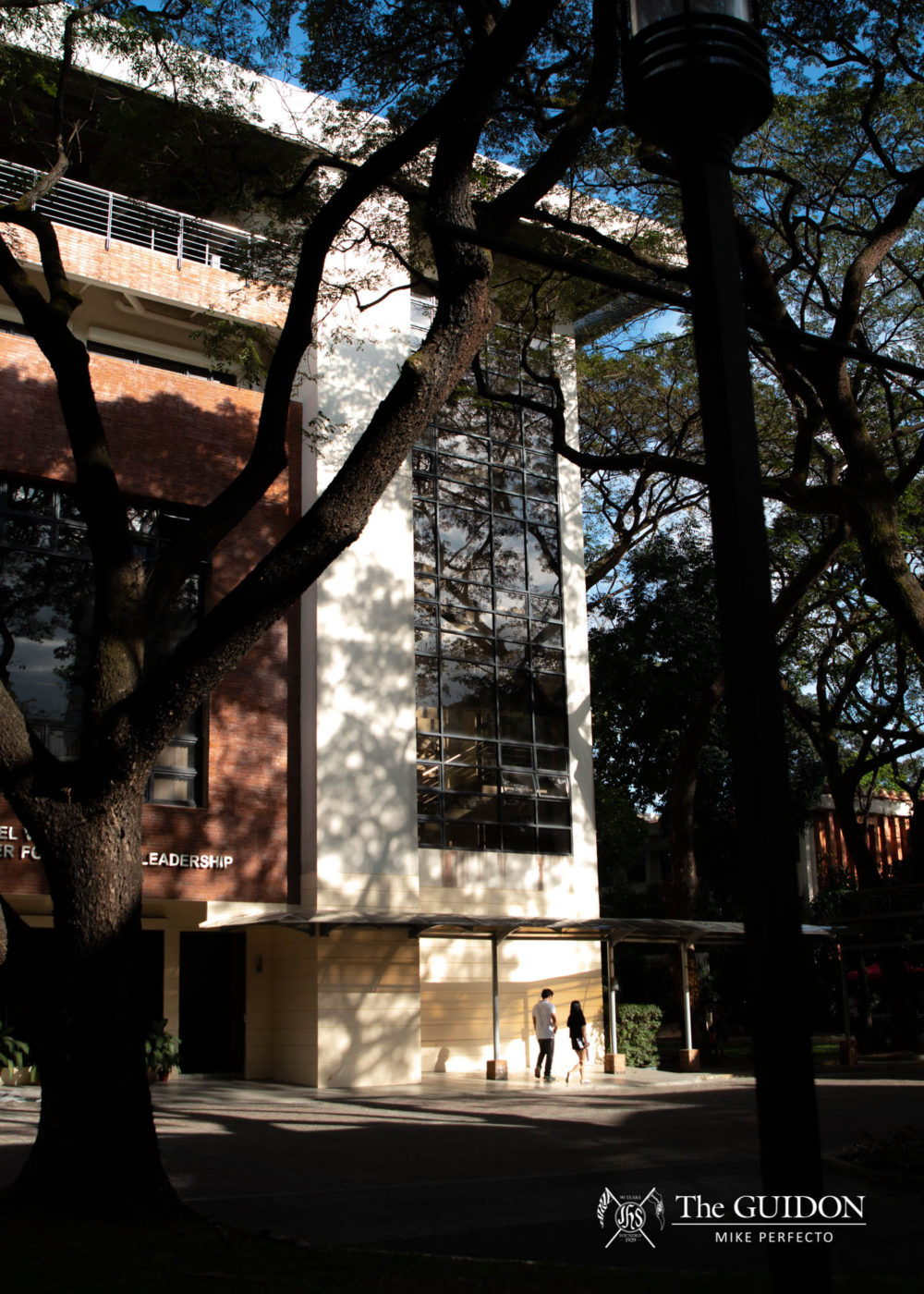DESPITE ITS position nestled along the bustling Katipunan Avenue and between the industries of Marikina and Quezon City, the Loyola Heights campus boasts an expansive integration of urban infrastructure with natural forestry and grasslands throughout University grounds. From the deep greenery of the forest near the John Gokongwei School of Management (JGSOM) to the vibrant Wildlife Sanctuary beside the Church of Gesu, the Ateneo tends well to the greenery and life atop its hill.
However, campus infrastructural developments have seen some of these green spaces cleared in recent years to make way for new facilities such as the Senior High School building and the Areté. In 2018, the Campus Facilities Management Office announced plans to clear parts of the JGSOM forest and develop road network extensions that would ease vehicular traffic in the area and throughout the campus. Members of the University’s community protested against this move, crying out for the homes of plant, animal, and fungi species on campus—the proposal has since been suspended indefinitely.
With the University’s ongoing plans for infrastructure development, the community must understand the immutable responsibility of the Ateneo towards the campus’ immediate environment, and the non-human residents who call the Ateneo campus their home.
Into the wild
Among the defenders of the Ateneo campus’ wildlife and forestry are The Ateneo Wild moderators Trinket Constantino and Abby Favis, who are professors under the University’s Biology and Environmental Science departments respectively.
Currently, the Ateneo Wild’s social media pages feature regular content on citizen science—this means students, parents, staff, faculty, and others who are able to document natural phenomena and creatures on campus are free to submit photos of different sightings of birds, flowers, reptiles, and other creatures.
Some of the most unique sightings include the predatory Peregrine Falcon perched atop campus streetlights, fresh crab species within the canals along the John Gokongwei Student Enterprise Center, and the Hydraena ateneo beetle species discovered on campus grounds in 2014.
Favis shares that the page was born out of “personal interest,” with the additional goal of promulgating its “underlying advocacy [of helping] urban dwellers see that the city can [be both beautiful and a green space where] we can coexist together.”
Constantino adds that the importance of stirring appreciation for green spaces within metropolitan areas comes with the urgency of maintaining ecologically diverse and natural “green corridors” throughout the city. “[The Ateneo] is lucky because it is continuous with [the natural environments] of [the campuses of] Miriam, UP Diliman, and the Balara filtration plant,” she explains. “[These areas compose] a large green corridor in Quezon City…and there’s a lot of literature [and studies] into the public health, psychological [and urban development] benefits afforded by the maintenance of public green spaces.” According to the World Health Organization, urban green spaces play the critical role of providing primary “cooling” for city environments by reducing emission-based humidity and heat. They also serve as safe routes for civilian foot traffic.
Integration, not inclusion
In order to protect the natural environment and inhabitants of the campus, the Campus Grounds Advisory Committee mandates the creation and screening of the Campus Master Plan (CMP), which illustrates the plans for both potential sites for future infrastructure and areas on campus that should be protected from urbanization and heavy construction.
Furthermore, in accordance with the University’s CMP, Director of the Office of Sustainability Elias V. Pan assures that “only three hectares [of the campus’ land area] are allotted for [building] present and future [infrastructure], with very minimal endemic trees affected by these area allocations.” The University’s total area is currently at 90-hectares.
Other than urban campus planning, the University is also investing in sustainable energy sources to power the campus in the next decade. In addition to the long-term reduction of the campus’ yearly carbon emissions and energy waste output, the short-term effects of investing in solar panels and energy-efficient fixtures will result in significantly less chemical, noise, and environmental pollution within the immediate environment of the University.
Beyond the benefits of a cleaner and more natural working and living environment, protecting the campus’ wild areas and inhabitants is also a matter of acknowledging and respecting the community’s impact on its immediate surroundings. It remains the obligation and responsibility of the University and all its inhabitants to honor the buzzing noise of a vibrant and living environment on campus.
Editor’s Note: A previous version of this article indicated that professor Abby Favis is from the Biology department instead of the Environmental Science department. The article has been corrected accordingly. We apologize for this oversight.
What do you think about this story? Send your comments and suggestions here: tgdn.co/2ZqqodZ







